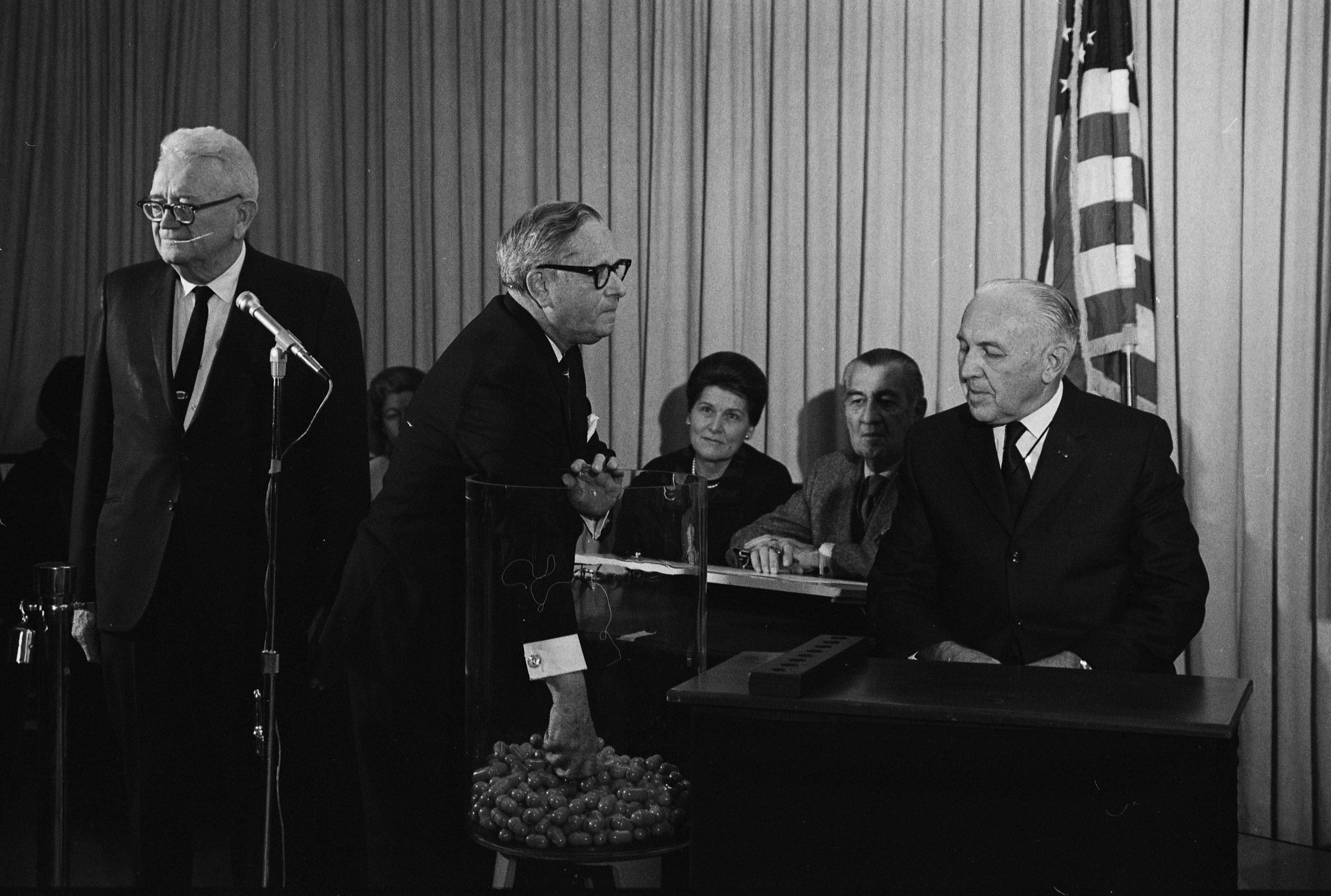On December 1, 1969, the Selective Service System of the United States held a lottery to determine the order of draft (induction) into the U.S. Army.

The days of the year, from 1 to 366, were written on slips of paper and the slips were placed in plastic capsules. The capsules were mixed in a shoebox and then dumped into a deep glass jar. Capsules were drawn from the jar one at a time.
The photograph shows Congressman Alexander Pirnie (R-NY) drawing the first capsule for the Selective Service draft, December 1, 1969. Congressman Pirnie's left hand appears to be on the mouth of the jar.
The first number drawn was 258 (September 14). Men of draft age whose birthday fell on the corresponding day of the year would all be drafted at the same time.
It was noted soon afterwards that the selection was not entirely uniform across the months of the year. In particular, days in December had a lower rank (sooner induction) than other months. The New York Times ran an article on January 4, 1970, titled "Statisticians Charge Draft Lottery Was Not Random".
A scatterplot of the days of the year (horizontal axis) and their ranks (vertical axis) shows a noticeable absence of days in December with high ranks (later induction).
References
- S.E. Fienberg. "Randomization and Social Affairs: The 1970 Draft Lottery". Science, volume 171, pages 255-261 (1971). (Cited by Starr as the "best and most comprehensive" article on the topic)
- Norton Starr. "Nonrandom Risk: The 1970 Draft Lottery". Journal of Statistics Education, volume 5, number 2 (1997). (Also available on-line: [1] Contains a lesson plan for statistics class using the 1970 and 1971 draft lottery data)
External links
- The Military Draft and 1969 Draft Lottery for the Vietnam War (News stories from the period)
- Introduction to Graphs (List of draft ranks, additional analysis)
- Frank Asaro - Astroid Impacts: The Inside Story (Mentions the shoebox in passing)